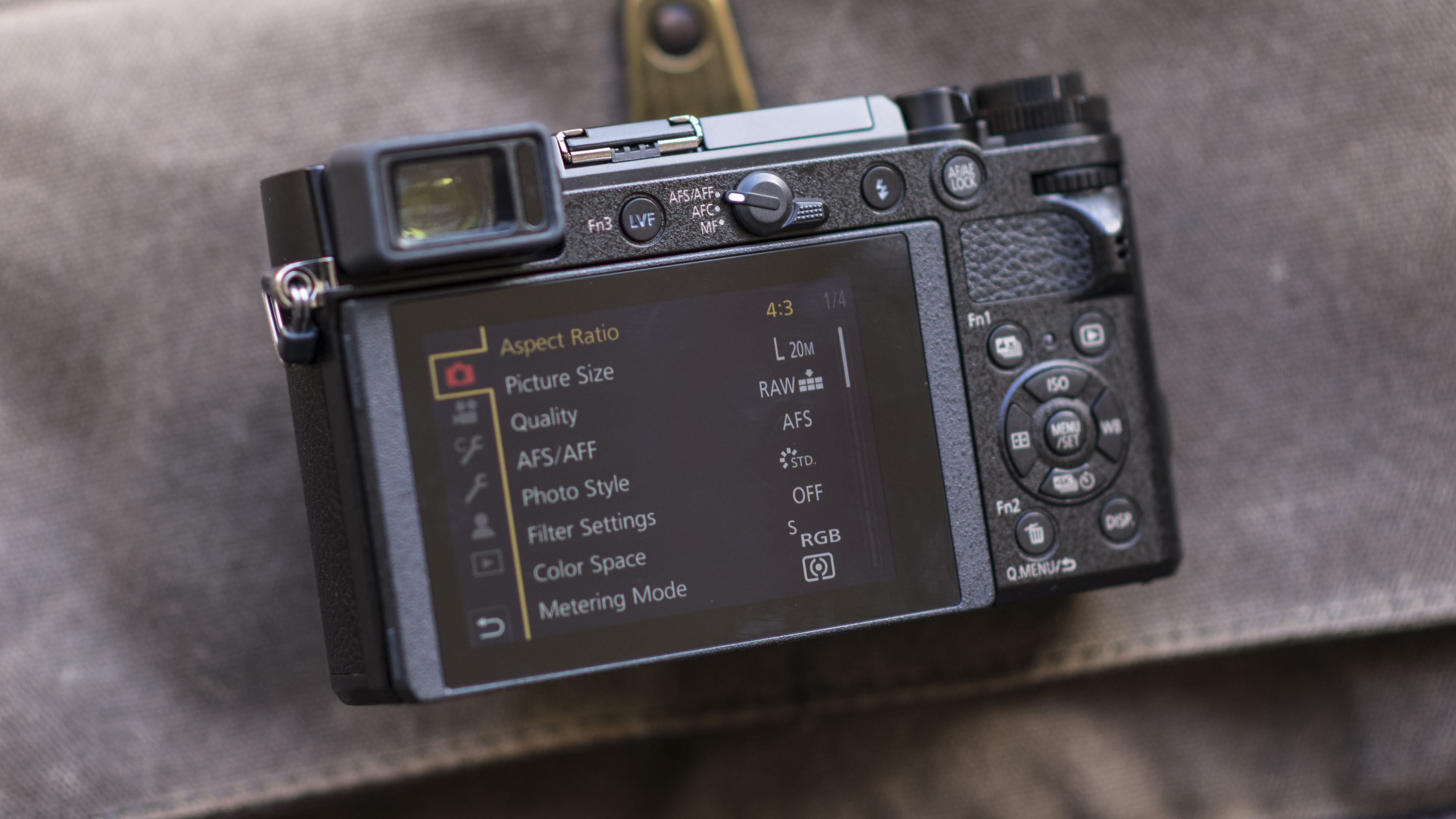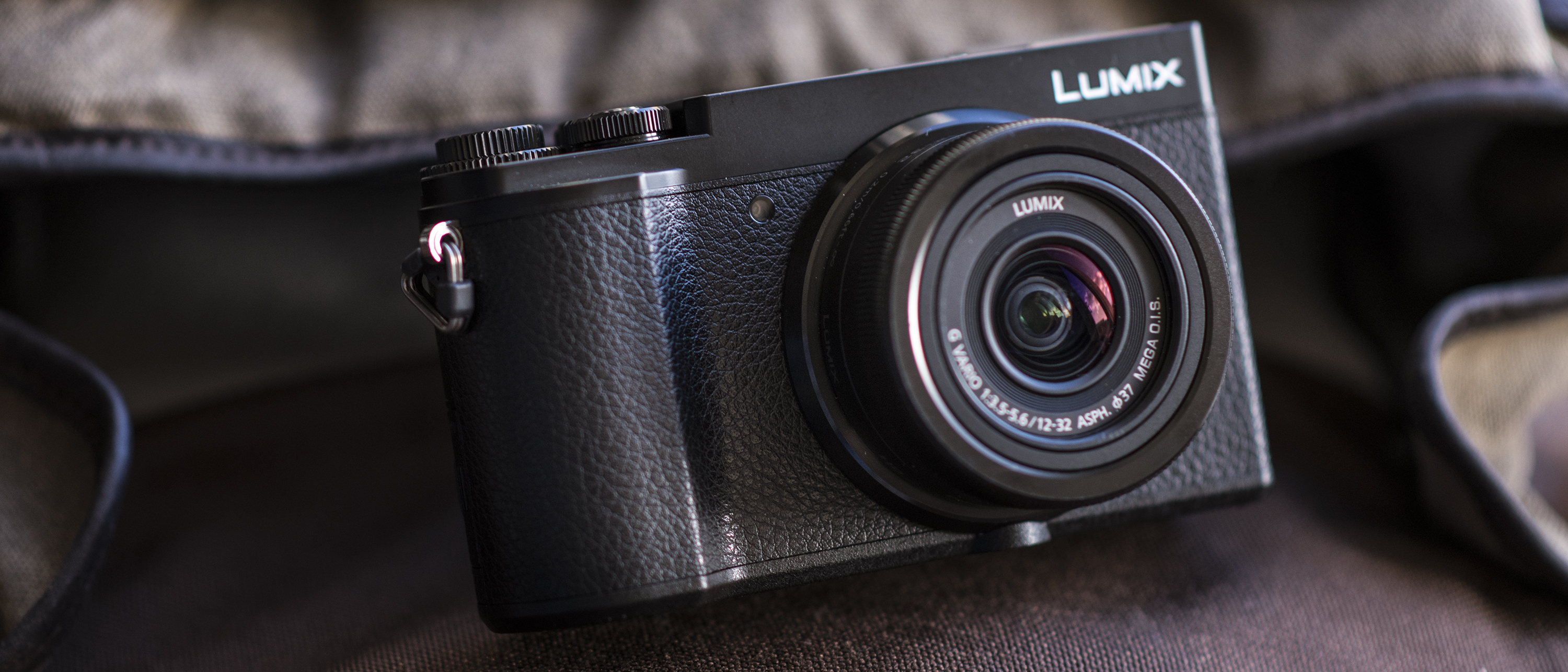Why you can trust TechRadar
Build and handling
- Rangefinder body with tilting EVF and LCD
- External EV compensation dial and focus lever
- Not weather-sealed
While the Lumix GX9 is a replacement for the GX8, the design follows the more compact Lumix GX80/GX85.
It's a touch smaller than its predecessor, with the chunky handgrip replaced by a much more streamlined affair. Despite the reduction in size the grip is still pretty comfortable, but there's an optional attachable grip if you want something a bit more substantial.
The reduction in grip size makes the GX9 a neat little camera with a quality feel, although Panasonic has opted to drop the weather-sealing featured on the GX8.
There's a mode dial on the top plate and, stacked below it, an exposure compensation dial, while there are twin command dials to control key settings. The front dial is easy to spin with your forefinger, while the rear dial is squeezed in above the thumb-rest on the back of the camera, and isn’t quite so easy to use.




Also on the rear of the camera is a focus lever that can be used to switch between AF-S (single shot), AF-C (continuous AF) and Manual focus modes, but there's no dedicated joystick to select your desired focus area – that's done via the touchscreen or the four-way control pad, and the latter option is quite a clunky affair, requiring a couple of button presses before you're in a position to move the focusing area.
There are also dedicated controls for the drive mode, 4K Photo modes, focus point selection, ISO and white balance. In an effort to keep the Lumix GX9 as trim as possible the buttons sit fairly flush with the body; however they're a bit too flush for our liking – we'd rather they were raised a bit more to make them easier to press.
The reliance on menus and icons for some routine adjustments might prove a little irksome for some, but the touchscreen is very responsive and effective, and you can use the twin control dials for menu and feature navigation rather than tapping on the screen.
Sign up for breaking news, reviews, opinion, top tech deals, and more.
Autofocus
- Focusing speeds are fast
- Depth From Defocus (DFD) technology works well
- Focus tracking suited to more predictable subjects
Unlike the Lumix G9 and GH5, which both feature Panasonic's 225-area AF system, the Lumix GX9 features a more conservative 49-area arrangement similar to that used by the Lumix G80/G85.
While it's not quite as suited to action photography as the G9 and GH5, focusing speeds are very quick indeed. Panasonic quotes 0.07 sec, and it's hard to dispute that, with the AF system using Panasonic's Depth From Defocus (DFD) technology to assess two images with different sharpness levels to determine correct subject distance.
If you want to keep things simple the camera can be set to a 49-area focusing option, with the camera selecting the key element to focus on, while 1-Area, Custom Multi, Pinpoint and Face- and Eye-detection options are also available.
In addition to these modes there's a dedicated Tracking mode, and while this will struggle with fast-moving subjects, for more pedestrian or predictable subjects it's a good option.
Current page: Build, handling and AF
Prev Page Introduction and key features Next Page Performance and image quality
Phil Hall is an experienced writer and editor having worked on some of the largest photography magazines in the UK, and now edit the photography channel of TechRadar, the UK's biggest tech website and one of the largest in the world. He has also worked on numerous commercial projects, including working with manufacturers like Nikon and Fujifilm on bespoke printed and online camera guides, as well as writing technique blogs and copy for the John Lewis Technology guide.

